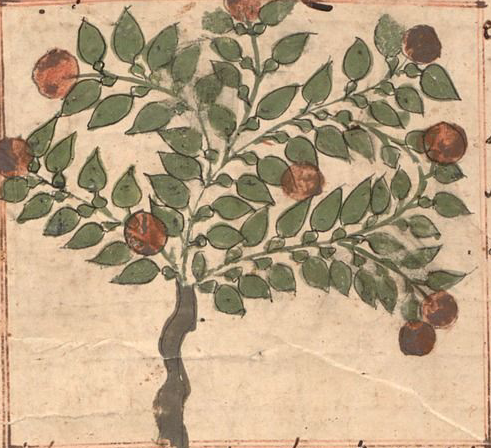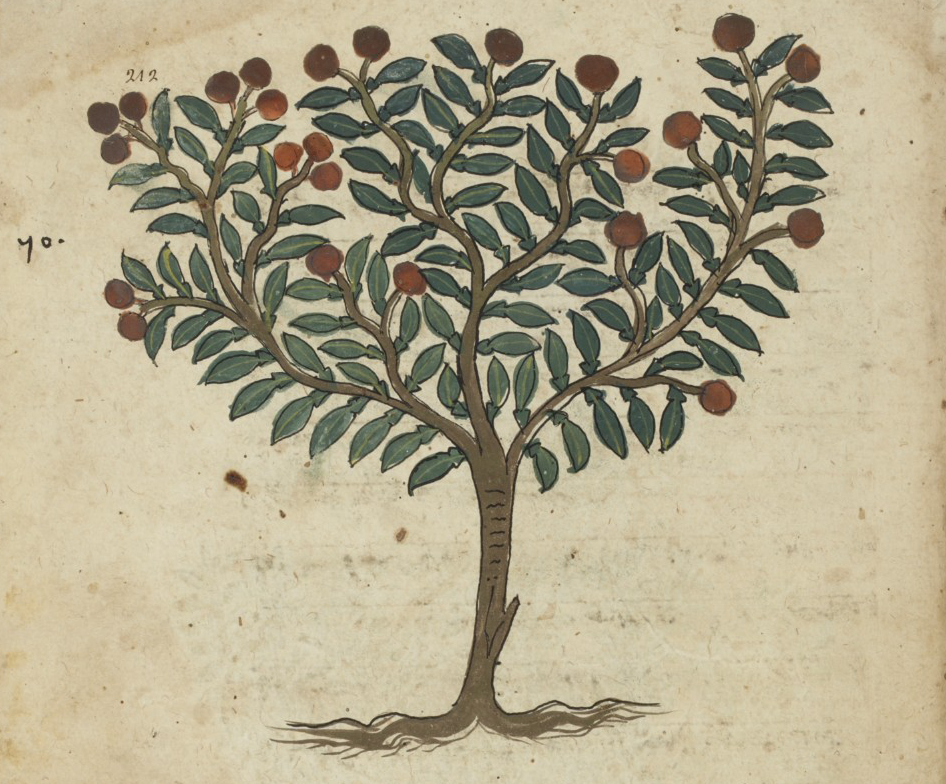Also known as bitter or Seville oranges (Citrus aurantium), the fruit is believed to be native to China and was unknown in the classical world. The Arabic name is derived from the Persian nārang (نارنگ), which is, itself, a Sanskrit borrowing (nārañga). The fruit was introduced to Europe (in al-Andalus) by the Arabs, whereas sweet oranges (Citrus sinensis) do not appear until the end of the Middle Ages. In mediaeval Arab cooking, the sour orange tended to be used in stews. The 13th-century Andalusian botanist Ibn al-Bayṭār reports that the orange had very green leaves and white blossoms, while the flesh of the fruit is as sour as citron. It was also used to produce an oil which dispels winds and strengthens the joints. The peel strengthens the heart. When the orange juice is drunk with hot water, it is good for gripes, and useful against stings of scorpions and many reptiles. However, the pulp on an empty stomach weakens the liver. His fellow Andalusian Ibn Khalṣūn (14th c.) added that the best variety was large and sweet, and that it should be eaten with sugar. Confusingly, the 12th-century Baghdadi pharmacologist Ibn Jazla equated nāranj with coconut (jawz hindī).


